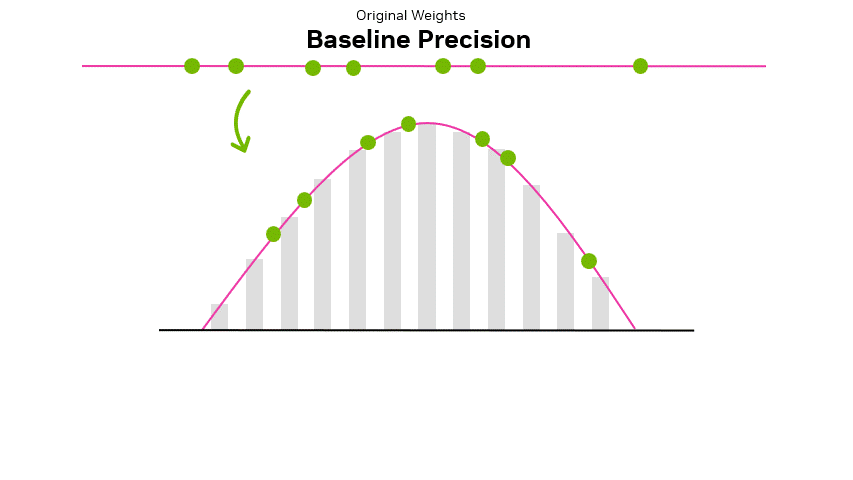MoE中的稀疏
不“怎么”增加模型计算开销的情况下,提升模型的体积
模型总参数量不变的情况下,降低每次推理的计算开销(所用参数)
MoE结构示例
-
一种"weighted multiplication"
- 其中
- 其中
-
-
为了体现稀疏性,一般选Top-k Gating
- 通常
- 通常
MoE与Transformers
Switch Transformers将Transformers中的FFN替换为MoE结构
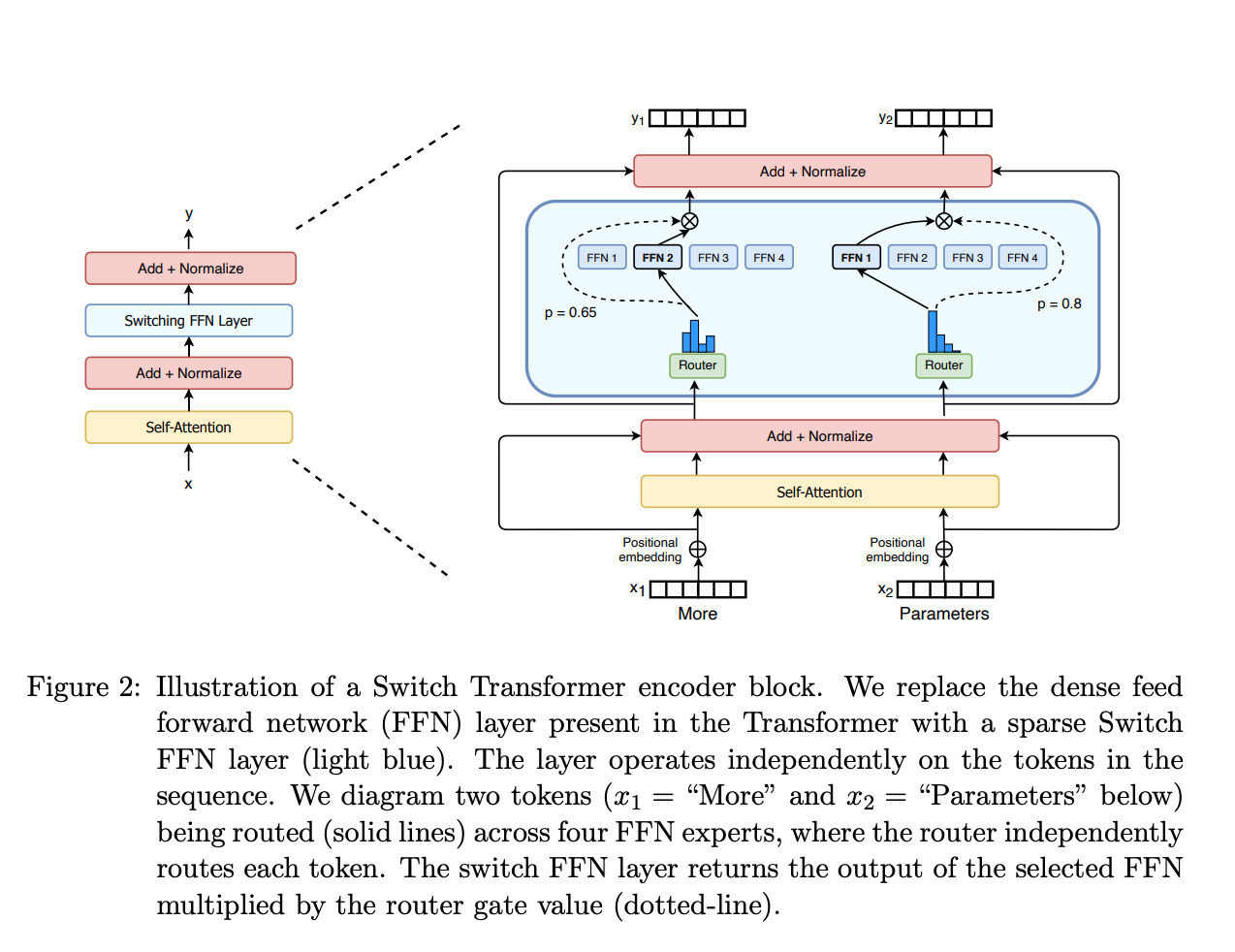
MoE与Transformers
- Switch Transformers
- T5-based MoEs going from 8 to 2048 experts
- Mixtral 8x7B
- 8 experts(每次激活2个)
主流MoE模型的experts数量
| 模型 | #Experts | top-k数量 | 备注 |
|---|---|---|---|
| Mixtral 8x22B | 8 | 2 | 专家更大,推理仍保持稀疏 |
| DeepSeek-V3 (670B A37B) | 256+1 | 8+1 | 开源中文 MoE,提供高效推理规模 |
| Qwen3-235B-A22B | 128 | 8 | 阿里开源 |
如何确定MoE中的expert
- 通过训练过程学习参数,确定每个expert
- 以Mixtral 8x7B为例
- 将FFN layer扩展为8个expert
- 每个expert为原有尺寸的一个FFN layer
- 通过Gating network选择最适合的expert
- 将FFN layer扩展为8个expert
前馈神经网络(FFN)
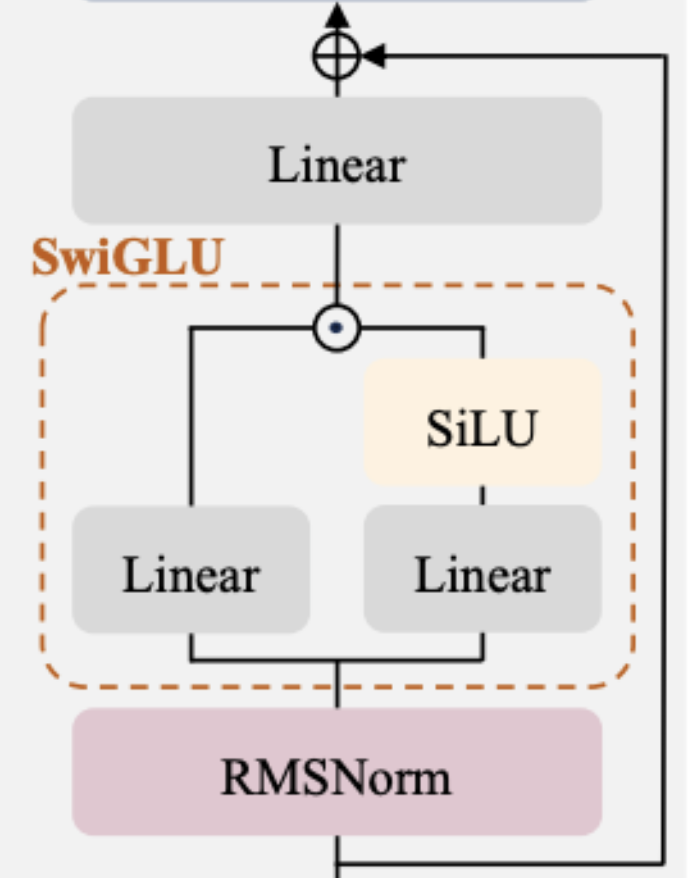
标准FFN实现
(mlp): LlamaMLP(
(gate_proj): Linear(in_features=2048, out_features=8192, bias=False)
(up_proj): Linear(in_features=2048, out_features=8192, bias=False)
(down_proj): Linear(in_features=8192, out_features=2048, bias=False)
(act_fn): SiLU()
)
- 默认包含Gate projection:
- self.down_proj(self.act_fn(self.gate_proj(x)) * self.up_proj(x)
MoE代码示例:Gating Network
import torch
import torch.nn as nn
class TopKGating(nn.Module):
def __init__(self, hidden_dim, num_experts, k=2):
super().__init__()
self.router = nn.Linear(hidden_dim, num_experts, bias=False)
self.k = k
def forward(self, x):
scores = self.router(x) # [batch, experts]
topk_scores, topk_idx = torch.topk(scores, self.k, dim=-1)
probs = torch.softmax(topk_scores, dim=-1)
gate = torch.zeros_like(scores)
gate.scatter_(-1, topk_idx, probs)
return gate, topk_idx
router根据输入生成专家打分,通过topk仅保留稀疏激活gate中的概率用于加权专家输出,topk_idx决定调用哪些expert
MoE的训练
- 通过load balancing训练MoE
- MoE训练之前:初始化每个expert,且并无任何含义
- 不加任何控制的训练:每次选取top-k(=2)的expert进行训练和参数更新,容易使模型选择被训练的快的experts
- load balancing: 在训练过程中,赋予每个expert近乎相同数量的训练样本
- DeepSeek-V3 通过共享专家与容量约束(capacity factor)等机制控制路由均衡,因此并未额外引入Switch Transformer式的auxiliary loss
Low-rank adaptation (LoRA)
- 一种流行的轻量级LLM微调技术
- 通过很少的trainable parameters,快速微调LLM
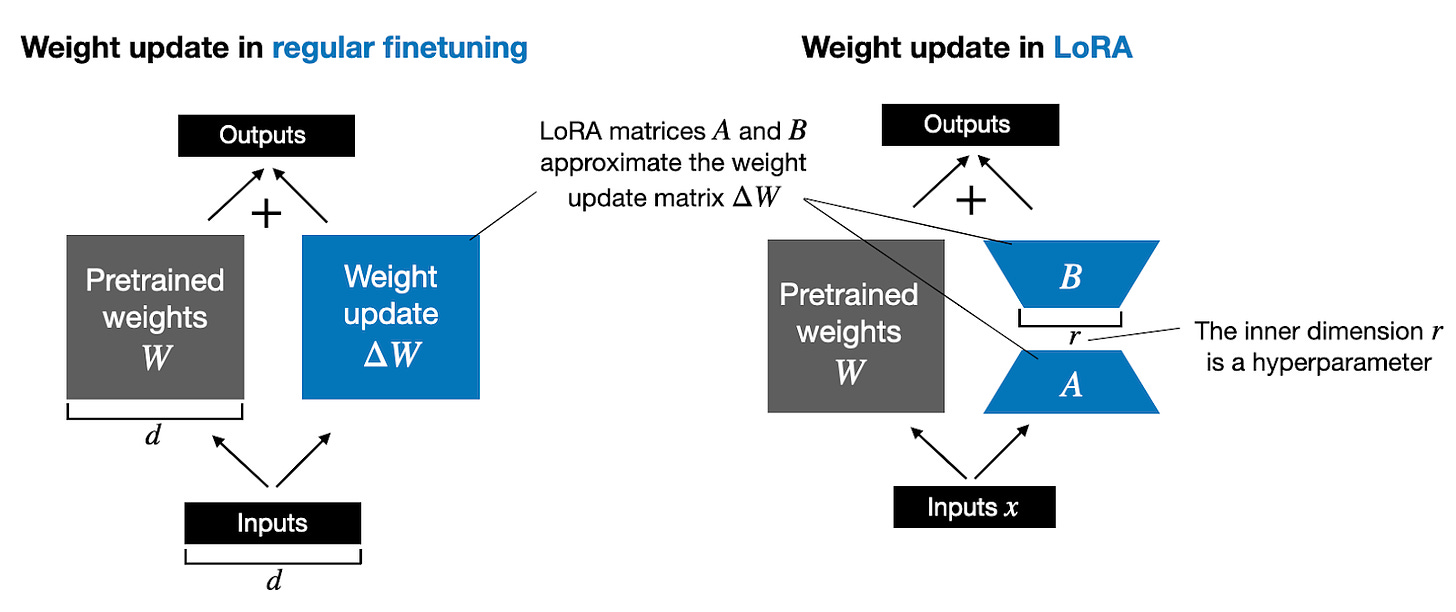
LoRA基本思路
- 传统的training和finetuning
- LoRA
LoRA推理
- 传统的training和finetuning后的推理过程
- LoRA推理
LoRA实现
import torch.nn as nn
class LoRALayer(nn.Module):
def __init__(self, in_dim, out_dim, rank, alpha):
super().__init__()
std_dev = 1 / torch.sqrt(torch.tensor(rank).float())
self.A = nn.Parameter(torch.randn(in_dim, rank) * std_dev)
self.B = nn.Parameter(torch.zeros(rank, out_dim))
self.alpha = alpha
def forward(self, x):
x = self.alpha * (x @ self.A @ self.B)
return x
LoRA实现
class LinearWithLoRA(nn.Module):
def __init__(self, linear, rank, alpha):
super().__init__()
self.linear = linear
self.lora = LoRALayer(
linear.in_features, linear.out_features, rank, alpha
)
def forward(self, x):
return self.linear(x) + self.lora(x)
浮点数表示
- 浮点数,又称floating point,是一种有符号的二进制数,考虑其精度(Precision),通常有:
- 双精度: FP64
- 单精度: FP32
- 半精度: FP16

浮点数表示
- 以FP32为例:
- 符号位: 1位 sign
- exponent部分: 8位 exponent
- fraction部分: 23位 fraction

浮点数表示
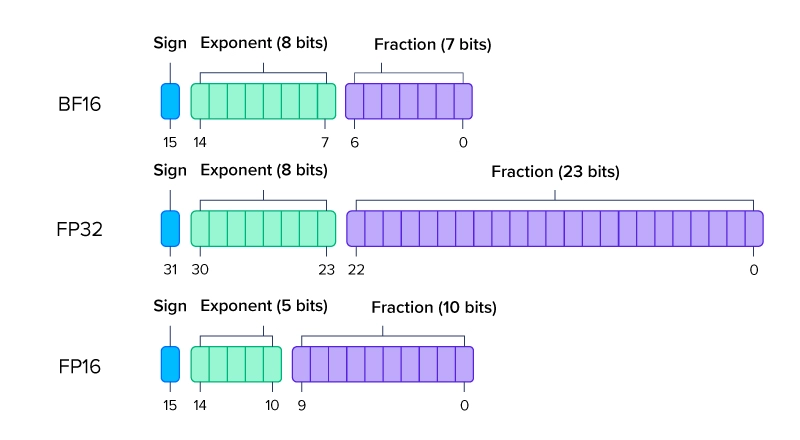
浮点数表示
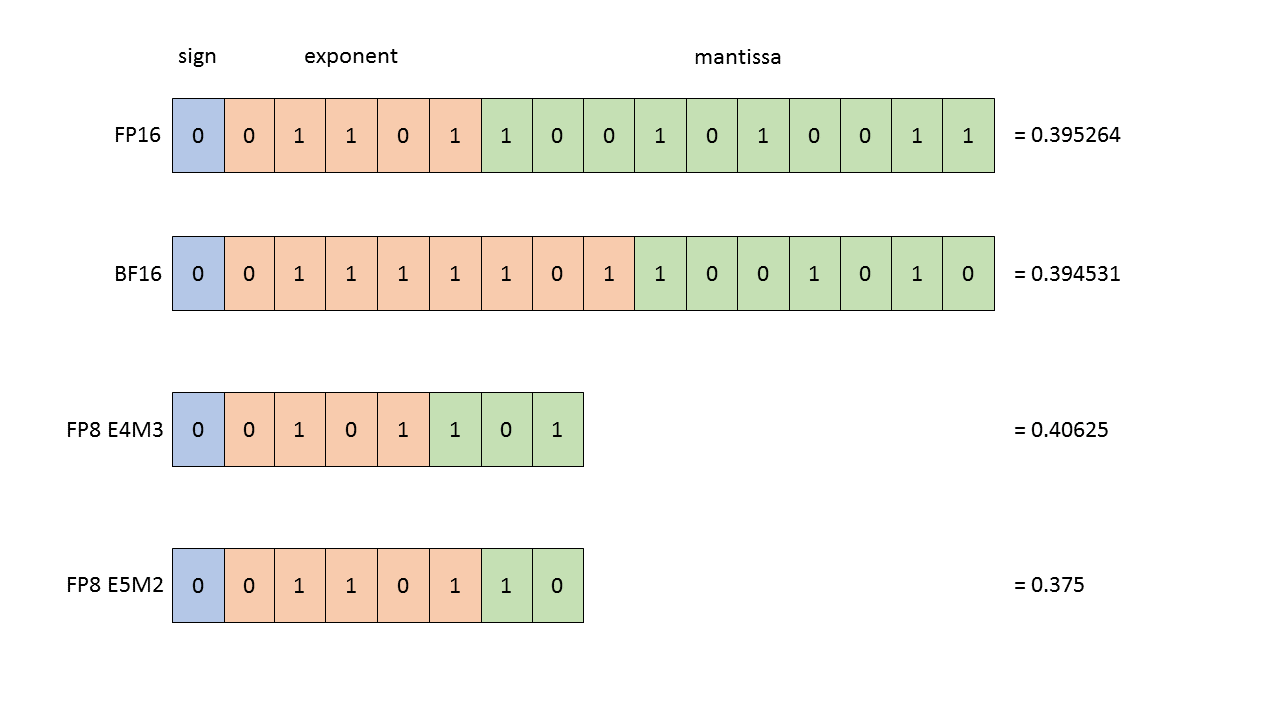
浮点格式对比
| 格式 | 尾数 | 指数 | 近似数值范围 | 常见场景 |
|---|---|---|---|---|
| FP32 | 23 | 8 | 1.18e-38 ~ 3.4e38 | 全精度训练、关键评估 |
| BF16 | 7 | 8 | 1.18e-38 ~ 3.4e38 | 大规模训练,保留 FP32 动态范围 |
| FP16 | 10 | 5 | 6.10e-5 ~ 6.55e4 | 混合精度训练、推理 |
| FP8 (E4M3 / E5M2) | 3 / 2 | 4 / 5 | 2.4e-2 ~ 4.48e2 / 5.96e-4 ~ 5.73e4 | 最新 GPU 上的高效推理/训练 |
精度与量化衔接
- 动态范围越大,越能容忍梯度与激活的波动(如 BF16 对比 FP16)
- 尾数位数越多,保留的有效精度越高(FP16 在小数部分优于 BF16)
- 常见流程:混合精度训练(BF16/FP32)→ 推理阶段量化(INT8/INT4)
- INT8:服务器推理主流选择,兼顾吞吐与精度
- INT4:边缘/移动部署,需配合蒸馏或量化感知训练
- 组合策略:依据模型规模、硬件指令支持与误差容忍度,混用浮点与整型格式
混合精度示意
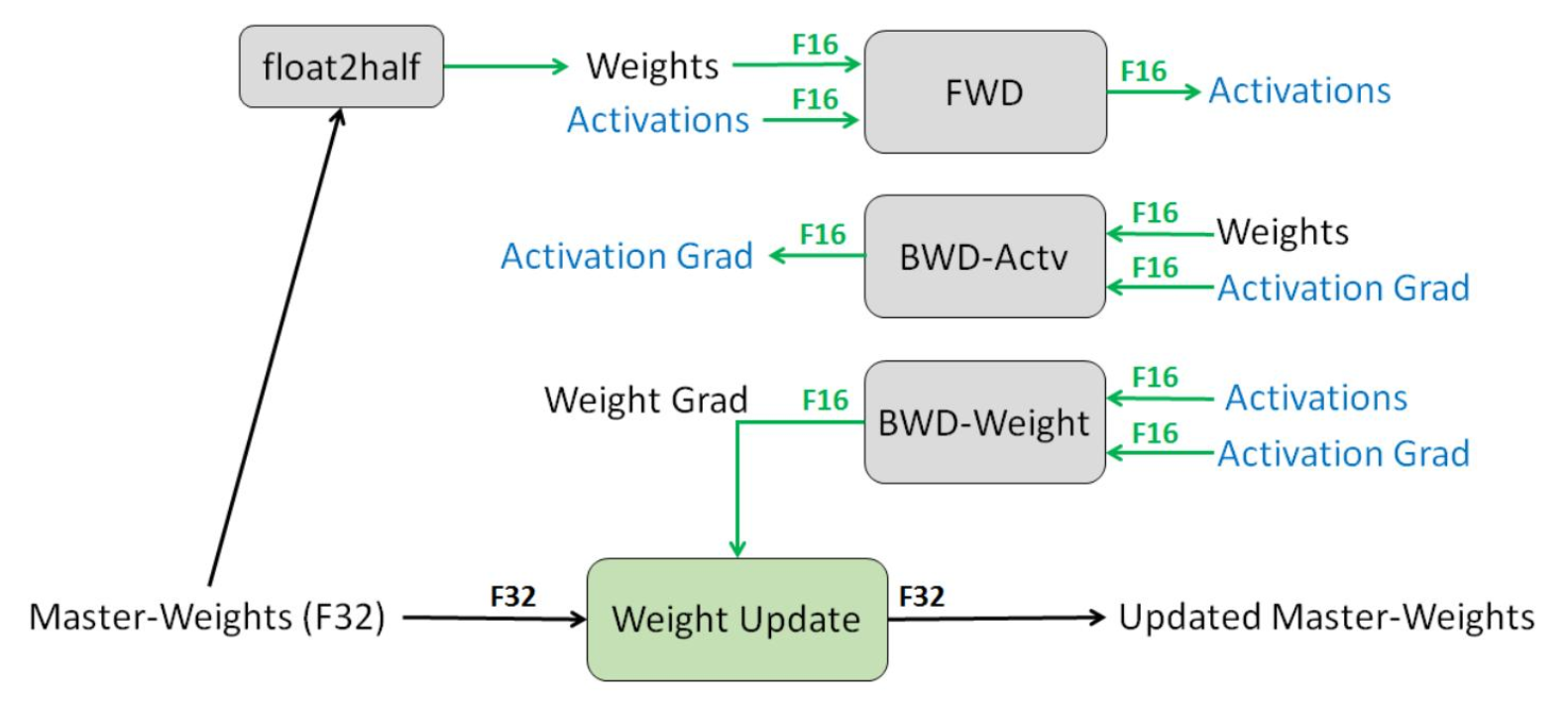
量化的核心思路
- 把浮点权重与激活压缩到较小的整数范围(如 INT8/INT4),降低显存与带宽占用
- 常见做法:为张量或通道学习缩放因子
scale和零点zero_point- 映射公式:
x_q = round(x/scale + zero_point) - x_q: 量化后数值
- scale: 缩放因子,fp32
- zero_point:零点,表示在浮点数域中值为 0 时,对应的 int8 整数值。
- 映射公式:
量化示意
